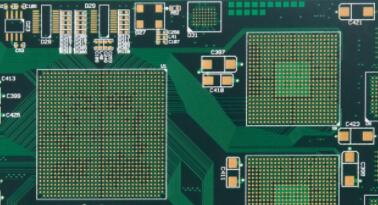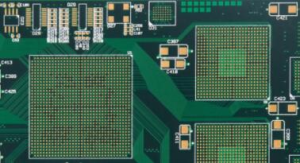
Printed circuit boards (PCBs) are the foundation of virtually all electronic devices, from the smallest wearable gadgets to advanced aerospace systems. The process of assembling these boards has evolved significantly over the decades. In the early years of electronics, soldering was almost exclusively manual, relying on the precision and skill of technicians with soldering irons. While effective, this approach was time-consuming, inconsistent, and prone to defects when scaled to mass production.
The introduction of reflow soldering fundamentally transformed the industry, allowing for automation, consistency, and mass production. Traditionally, reflow soldering has been accomplished using large conveyor-belt ovens, where entire PCBs pass through carefully controlled temperature zones. However, as electronics miniaturized and as prototyping environments demanded compact, precise, and cost-effective solutions, the PCB Reflow Hot Plate emerged as a viable alternative.
In this article, we will explore the concept, design, benefits, limitations, and future of the PCB Reflow Hot Plate. I will not only detail the technical aspects but also integrate my own reflections on why I believe this tool is particularly relevant in today’s electronics landscape. Along the way, I will also highlight practical insights for engineers, makers, and businesses looking to optimize their soldering processes.

PCB Reflow Hot Plate
A PCB Reflow Hot Plate is a desktop-scale device designed to replicate the controlled heating profiles of traditional reflow ovens, but in a more compact and often more affordable form. Instead of moving PCBs through heating zones, the hot plate heats the entire board from below, gradually raising its temperature until the solder paste melts and establishes strong solder joints.
The principle is straightforward:
Heat Transfer – The plate surface is designed to distribute heat evenly across the PCB.
Temperature Control – Advanced hot plates come with programmable thermal profiles that mimic the preheat, soak, reflow, and cooling phases.
Solder Activation – As the solder paste reaches its melting point, it reflows, forming reliable electrical and mechanical connections.
Cooling – After reflow, controlled cooling prevents thermal shock and ensures joint integrity.
Unlike bulky reflow ovens, the PCB Reflow Hot Plate is compact, energy-efficient, and particularly well-suited for prototyping and low-volume assembly.
From my perspective, what makes this device fascinating is how it democratizes access to professional-level soldering. A small laboratory, a startup, or even an individual hobbyist can now achieve soldering precision that once required industrial-scale equipment.
The concept of heating PCBs on a flat surface is not entirely new. In fact, early electronics tinkerers often improvised with modified kitchen hot plates or toaster ovens. These improvised solutions lacked precision, leading to inconsistent solder joints, overheated components, or cold soldering issues.
As demand for precision electronics grew, companies began engineering purpose-built reflow hot plates. These modern devices integrate precise temperature sensors, microcontroller-based feedback loops, and advanced heating elements that provide the necessary accuracy for professional soldering.
One of the most interesting shifts has been the growing accessibility of these devices. Where once only large corporations could afford high-end reflow ovens, today, even students in engineering labs can use a PCB Reflow Hot Plate to assemble complex surface-mount technology (SMT) circuits. This trend parallels the democratization of other manufacturing technologies, such as 3D printing, where once-expensive tools became accessible to the masses.
A PCB Reflow Hot Plate typically includes several critical components:
Heating Surface – Usually made of aluminum or ceramic-coated plates, ensuring even heat distribution.
Heating Elements – Embedded resistive heaters or infrared elements provide the thermal energy.
Temperature Sensors – Thermocouples or RTDs that monitor surface and PCB temperatures.
Controller Unit – A digital interface allows users to select and monitor heating profiles.
Cooling Mechanism – Some advanced models integrate fans or controlled cooling routines.
Safety Features – Overheat protection, insulated housings, and automatic shut-off.
The design focus is on uniform heating. Uneven heat distribution can cause partial solder reflow, leading to weak joints. Advanced PCB Reflow Hot Plate systems use multiple sensors and distributed heating zones to minimize these risks.
One of the defining aspects of a PCB Reflow Hot Plate is its ability to replicate precise thermal profiles. In soldering, it is not enough to simply apply heat until solder paste melts; the process must follow a carefully managed sequence of temperature changes to ensure reliable results.
Preheat Phase
During preheating, the PCB temperature rises steadily.
This stage activates the flux within the solder paste and drives off volatile solvents.
On a PCB Reflow Hot Plate, the heating plate ensures the entire board warms evenly, minimizing thermal shock.
Soak Phase
After preheat, the temperature stabilizes at a range (typically 150–180°C).
This allows all components on the board to reach a uniform temperature before reflow occurs.
Consistency here is critical to prevent warping and ensure that every solder joint reflows simultaneously.
Reflow Phase
The temperature briefly rises above the solder alloy’s melting point (around 220–250°C for lead-free solder).
Surface tension causes the molten solder to “self-align,” pulling components into their proper position.
A PCB Reflow Hot Plate must control this stage precisely; excessive heat risks damaging sensitive components.
Cooling Phase
Controlled cooling ensures solidification without introducing stress fractures or voids in the solder.
Some hot plates simply rely on natural convection, while advanced ones integrate fan-assisted cooling.
Without a carefully controlled profile, solder joints may fail prematurely. Cold joints, bridging, and component delamination are all risks. By simulating the conditions of a professional reflow oven in a compact format, a PCB Reflow Hot Plate gives engineers and hobbyists access to industrial-grade reliability.
From my own experience in observing electronics assembly, I have noticed that beginners often underestimate the importance of the soak and cooling stages. They may be eager to melt solder but fail to realize that controlled transitions are equally important. This is where the PCB Reflow Hot Plate truly shines—it makes those transitions repeatable and predictable.
Why choose a PCB Reflow Hot Plate instead of traditional soldering irons or bulky reflow ovens? The answer lies in its unique blend of benefits that balance performance, accessibility, and cost.
Compact Size
Fits on a desktop or small workbench.
Ideal for labs, classrooms, or small businesses.
Affordability
Generally far less expensive than a full reflow oven.
Opens the door for startups and individuals to assemble professional-grade PCBs.
Energy Efficiency
Consumes less power compared to conveyor ovens.
Useful in locations with limited electrical infrastructure.
Ease of Use
User-friendly interfaces make it accessible even for beginners.
Pre-programmed profiles reduce the learning curve.
Consistency and Reliability
Provides repeatable results, ensuring solder joints meet industrial standards.
Flexibility
Works for prototypes, small-batch runs, and even educational demonstrations.
A well-designed PCB Reflow Hot Plate offers impressive performance. Many models can handle fine-pitch components such as QFNs and BGAs, which were once considered possible only with industrial ovens.
Furthermore, advanced models include USB or Wi-Fi connectivity, allowing engineers to upload custom reflow profiles directly from their design software. Some even log thermal data, giving insights into process optimization.
A fair question arises: if reflow ovens are the gold standard, why opt for a hot plate? To answer this, let’s compare the two approaches.
Both follow a controlled thermal profile.
Both enable surface-mount soldering at professional standards.
Both reduce reliance on manual soldering for fine-pitch components.
Size and Footprint
Reflow ovens are large, often requiring dedicated space.
PCB Reflow Hot Plates are compact and portable.
Volume Capacity
Ovens handle mass production; hot plates are better for small runs.
Heat Transfer
Ovens use convection and sometimes infrared heating.
Hot plates rely mainly on conduction from below.
Control Complexity
Ovens allow multi-zone profiles.
Hot plates mimic the effect with simplified control but may lack zone differentiation.
Cost
Industrial ovens cost thousands to tens of thousands of dollars.
Hot plates are often under $1,000, with some entry models below $300.
I see the PCB Reflow Hot Plate not as a competitor but as a complement to reflow ovens. In prototyping, the cost and speed advantages outweigh the lack of volume capacity. For production scaling, ovens remain indispensable. But the hot plate fills a crucial gap between individual soldering irons and industrial reflow lines.
The rise of desktop manufacturing tools—3D printers, laser cutters, CNC mills—has empowered innovators to take ideas from concept to prototype faster than ever. The PCB Reflow Hot Plate fits perfectly into this ecosystem.
Rapid Iteration
Engineers can design, fabricate, and assemble PCBs within days.
No need to outsource every assembly cycle.
Error Detection Early
Prototype testing often reveals design flaws.
With a hot plate on-site, fixing and reflowing can be done instantly.
Cost Reduction
Eliminates outsourcing costs for every iteration.
Particularly important for startups with tight budgets.
Educational Labs
Students gain hands-on experience with professional soldering processes.
Bridges the gap between theory and practice.
Having observed maker communities, I can confidently say the PCB Reflow Hot Plate has lowered the barrier to hardware innovation. Much like how desktop 3D printers transformed mechanical prototyping, hot plates are enabling small-scale electronic experimentation that was once prohibitively expensive.
The PCB Reflow Hot Plate is more than just a desktop heating tool—it is a gateway to precision soldering once reserved for large industrial operations. From hobbyists to startups, from classrooms to specialized industries, it provides an accessible, cost-effective, and reliable method of achieving perfect solder joints.
While it has limitations in scalability and heating uniformity, its advantages—compactness, affordability, and consistency—make it an essential tool in the modern electronics toolkit.
In my reflection, I see the PCB Reflow Hot Plate as a symbol of the continuing democratization of technology: powerful capabilities, once locked in expensive factories, now available to innovators everywhere.
1. What is the difference between rolled copper foil and electrolytic copper foil?
Rolled copper foil is produced by mechanically rolling copper into thin sheets, offering better surface quality and mechanical strength. Electrolytic copper foil is deposited via an electrolytic process and is more flexible and cost-effective.
2. Can a PCB Reflow Hot Plate handle lead-free soldering?
Yes, most hot plates reach the 245–260°C range needed for lead-free alloys. The key is ensuring precise thermal profiling to avoid overheating components.
3. Is a PCB Reflow Hot Plate suitable for BGA components?
With practice and proper profiles, yes. Many users successfully reflow BGAs on hot plates, though X-ray inspection may be required to verify hidden solder joints.
4. How often should I calibrate my PCB Reflow Hot Plate?
For professional use, calibration every 3–6 months is recommended. For hobbyist use, once a year may suffice unless results appear inconsistent.
5. Can I replace a full reflow oven with a PCB Reflow Hot Plate?
For prototyping and small runs, absolutely. For mass production, no—the throughput and automation of ovens are still unmatched.
Connect to a Jerico Multilayer PCB engineer to support your project!
Request A Quote